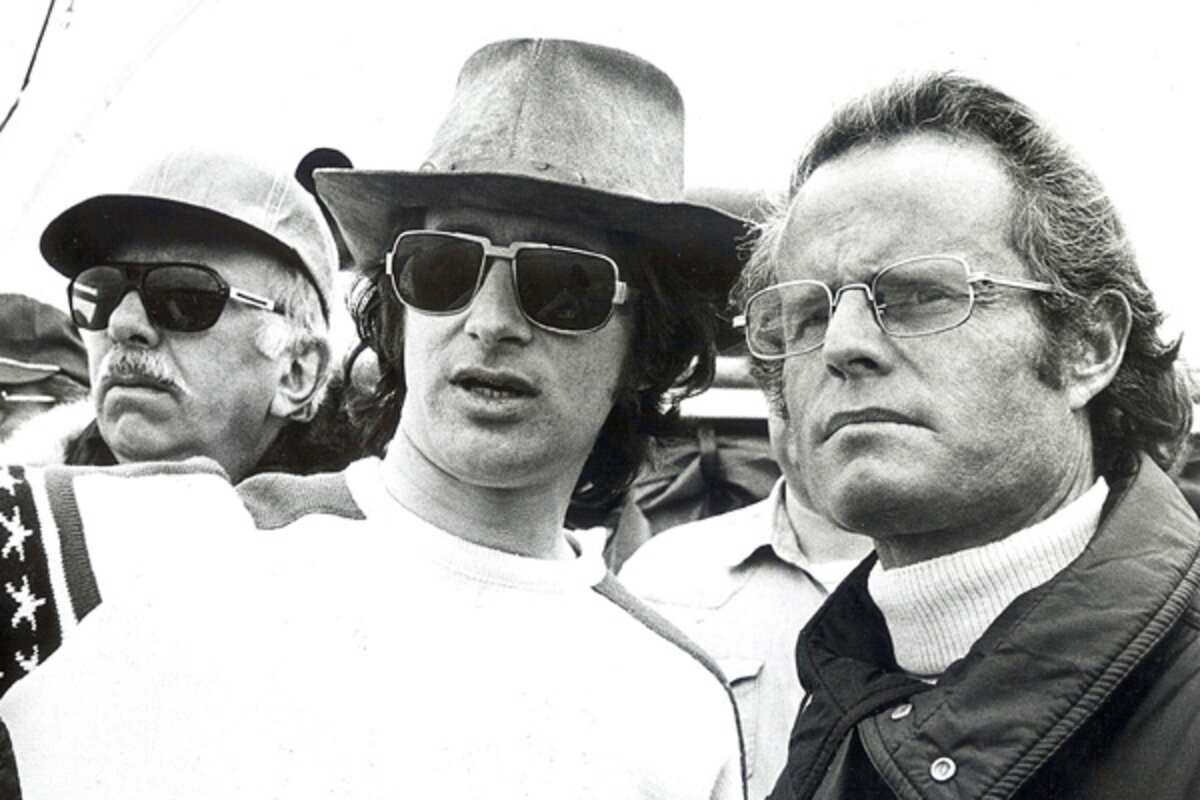'Jaws' 35th anniversary: How Jaws changed summer movie blockbusters
Loading...
In the summer of 1975, the movie “Jaws” made people across America stop thinking it was safe to go into the water.
Instead, they went to the movies to get by a wunderkind director named Steven Spielberg, a testy mechanical shark and perhaps the most menacing musical score in the history of cinema.
“Jaws” debuted on June 20, 1975. Universal Studios gambled that by unleashing the movie in wide release to theaters across the country, then an uncommon practice, and coupling the release with a massive TV ad campaign, the film would be big. They were wrong.
IN PICTURES: Top shark attack locations
It was huge.
“Jaws” played in theaters for months and earned more than $470 million, thus becoming the first summer movie blockbuster, according the book “Blockbuster: How the Jaws and Jedi Generation Turned Hollywood into a Boom-Town” (Simon & Schuster, 2004).
The picture remained the biggest box-office hit of all time until George Lucas bumped it from the top spot two years later with another summer smash, “.”
What makes the story even more remarkable is that “Jaws” was a movie plagued by production problems.
Spielberg, who had previously directed only one feature, “The Sugarland Express,” was running behind schedule and way over budget. The movie was filmed on Martha’s Vineyard and shooting lasted nearly 160 days, instead of the scheduled 55, and cost more than double its original $4 million budget, according to “America’s Film Legacy: The Authoritative Guide to the Landmark Movies in the National Film Registry” (The Continuum International Publishing Group, 2010).
To make matters worse, the film’s title player, , was a malfunctioning mess that rarely worked. In the “Making of Jaws,” a documentary produced for the movie’s 30th anniversary, Spielberg talked about the frustration he felt with the nonfunctioning Great White.
But those mechanical mishaps may have been the most important technical snafus in movie history.
The frequent delays allowed for the script to be continually refined. And because his primary special effects prop wasn’t working properly, Spielberg had to improvise. As a result, the shark (nicknamed Bruce, after the director’s lawyer) didn't make its first full appearance onscreen until 81 minutes into the 124-minute movie.
In keeping off-screen for most of the film, Spielberg employed a strategy often used by the master of suspense, Alfred Hitchcock, wrote film critic Roger Ebert in his book, “Great Movies II” (Random House, 2005).
"A bomb is under the table and it explodes. That is surprise," Ebert quotes Hitchcock. "The bomb is under the table but it does not explode. That is suspense."
Spielberg leaves the under the table for most of the movie, Ebert explains, and the payoff is one of the most effective thrillers ever made.
The eerie suspense, combined with the crisp cinematography and John Williams’ unforgettable score, made “Jaws” a spine-tingling sensation.
The astounding success of “Jaws” opened the eyes of studio executives to the moneymaking ability of summer movies. It may be hard to believe today, but in 1975, the summer months were considered a dumping ground for movies, according to the industry compendium “George Lucas’s Blockbusting” (Harper Collins, 2010).
“In the early 1970s, the only movies that got simultaneous wide release were big-budget turkeys that the studios wanted to play off quickly before word [got out],” according to “George Lucas’s Blockbusting.”
After “Jaws,” studios reversed course and started programming big-budget, high-concept films for the summer. And instead of slow burning, word-of-mouth "platform" release patterns, Hollywood started rolling out its high-profile films in wide release, for maximum impact.
For better or worse, “Jaws” and its fellow 1970s phenomenon “Star Wars” ushered in the modern era of movies as mass commercial commodities, so-called tentpole pictures that could sell as much merchandise as movie tickets, according to “Easy Riders, Raging Bulls,” (Simon & Schuster, 1998). "Jaws" merchandise included t-shirts, plastic fins for swimmers and a game.
One can only wonder how it all would have turned out if the shark had actually worked the way Spielberg wanted it.
This article was provided by , a sister site to LiveScience.
IN PICTURES: Top shark attack locations




